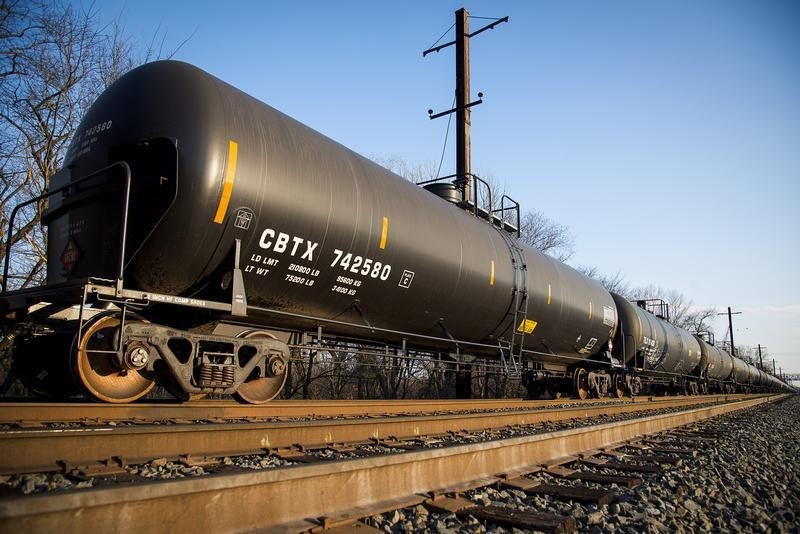Investing.com - Crude oil prices were narrowly mixed in Asia on Thursday as sentiment was underpinned regionally by China's official manufacturing PMI, though the market is now largely driven by the stoppages and damaged caused by Hurricane Harvey along the U.S. Gulf Coast.
On the New York Mercantile Exchange crude futures for October delivery fell 0.02% to $45.95 a barrel, while on London's Intercontinental Exchange, Brent edged up 0.08% to $50.77 a barrel.
In Japan, provisional industrial production data for July fell 0.8%, more than a 0.5% decline expected.
The official manufacturing Purchasing Managers' Index in China came in at 51.7 in August, beating expectations, data released Thursday showed.
Analysts polled by Reuters expected China to post official PMI of 51.3 for August, a tick down from 51.4 in July. A reading above 50 indicates expansion, while a reading below that signals contraction. The non-manufcaturing, or services, came in at 53.4 in August, down from 54.5.
In Australia, private new capital expenditure for the second quarter jumped 0.8%, well above a 0.3% gain seen and private sector credit for July came in as expected, up 0.5%.
Overnight, crude futures settled lower on Wednesday, as flooding from Tropical Storm Harvey continued to batter US refinery capacity, offsetting data showing U.S. supplies of crude oil fell for a ninth-straight week.
Refinery shutdowns across Texas due to flooding from Strom Harvey, triggered fears of an uptick crude inventories, following a fall in demand for crude oil, as refining capacity continued to come under pressure.
Refineries with output of 4.2 million barrels per day (bpd) were offline on Tuesday, representing nearly 23 percent of U.S. production, according to Reuters estimates and company reports.
A report from the Energy Information Administration (EIA) showing crude stockpiles fell more than expected last week lifted sentiment but gains were short lived as investor focus returned to the storm’s impact on demand for crude as refineries are not expected to restart for a week or more.
Inventories of U.S. crude fell by roughly 5.4m barrels in the week ended Aug 25, beating expectations of a draw of about only 1.9m barrels. It was the ninth-straight week of falling crude inventories.
Gasoline inventories, one of the products that crude is refined into, rose by roughly 35,000 barrels, missing expectations of a draw of 989,000 barrels while distillate stockpiles rose by 748,000 barrels, confounding expectations of a decline of 846,000 barrels.
The smaller-than-expected draw in gasoline inventories failed to offset concerns over fuel shortages, as gasoline hit a two-year high on reports that Total’s Port Arthur, Texas, the nation's largest refinery had been shut by a power outage resulting from the storm.
Analysts’ expect the EIA’s energy report next week to show an uptick in crude oil inventories, as the slump in refinery activity lowers demand for crude oil, the primary input at refineries, adding to the glut in crude supplies.
“Next week’s EIA data should see large draws in products due to refinery outages, prompting large builds in oil inventories,” said John Macaluso, an analyst at Tyche Capital Advisors. About 1.4 million barrels of extra oil that “won’t be refined to fuels will be sent to storage as long as refineries are shut-in.”
